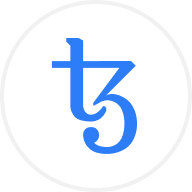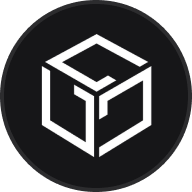Sandbox je decentralizovaný virtuální svět na blockchainu Ethereum, kde můžete vytvářet, sdílet a monetizovat voxelová aktiva a hry. Sandbox je platforma typu play-to-earn (P2E) založená na Ethereu, jejíž tvůrci usilují o vytvoření pohlcujícího zážitku metaversa bez centralizované autority.
Tradiční hry postavené na stavění virtuálních světů pomocí voxelů jako Minecraft jsou centralizované hry, kde uživatelé nemají vlastnictví nad svými výtvory nebo hraním. Sandbox tento problém řeší tím, že hráčům umožňuje stavět a monetizovat herní zážitky na blockchainu Ethereum.
Na rozdíl od tradičních her, kde aktiva ve hře existují na serveru příslušné společnosti, každý objekt v metaversu Sandbox je volně obchodovatelný nezastupitelný token (NFT) na blockchainu Ethereum, který uživateli dává úplné vlastnictví herní položky. Tvůrci v Sandboxu tak mají skutečné vlastnictví svých výtvorů prostřednictvím těchto NFT. Navíc jsou za svou účast odměňováni SAND, užitkovým tokenem sítě.
Protože ekosystém Sandbox je napájen blockchainem Ethereum, veškerá exekuce smart kontraktů, převody NFT, kryptoměnové transakce a vedení záznamů jsou usnadněny sítí Ethereum. To se děje prostřednictvím tří hlavních produktů, které podporují tyto funkce a pomáhají uživatelům vytvořit svůj virtuální svět. Jsou jimi VoxEdit, Marketplace a Game Maker.
VoxEdit je balíček modelování voxelů zdarma, který uživatelům umožňuje vytvářet a animovat 3D objekty. Tyto objekty lze poté exportovat na tržiště Sandbox jako herní ASSETY. Tržiště je webový obchod propojující kupující a prodávající obchodující s Asset NFT. Umožňuje uživatelům nahrávat, publikovat a prodávat své ASSETY jako tokeny ERC-721 a ERC-1155.
Nakonec Game Maker umožňuje uživatelům přidat herní mechanismy k jejich voxelovým aktivům prostřednictvím vizuálních skriptovacích uzlů, což jim umožňuje vytvořit poutavý herní zážitek na zakoupeném pozemku LAND. Uživatelé mohou pomocí Game Makeru umístit voxelová aktiva také na svůj pozemek LAND v Sandboxu. LAND může také hostit soutěže a události, monetizovat aktiva, hrát a vytvářet hry, hlasovat ve správě metaversa Sandbox, a stakovat tokeny SAND. Je dostupný maximálně počet 166 464 LANDů.
SAND: Nativní token Sandboxu
SAND je token ERC-20 používaný pro transakce v rámci platformy, mimo jiné. Hráči utrácejí SAND za přístup ke hrám a hraní her, nákup vybavení a přizpůsobení avatarů. SAND lze také použít k nákupu aktiv a LAND.
Dalším nativním tokenem metaversa Sandbox jsou tokeny ASSET, které lze nakupovat a prodávat za SAND. Uživatelé mohou vytvářet a prodávat tokeny ASSET na Tržišti jako NFT představující předměty ve hře.
SAND funguje také jako správní token. Držitelé mohou hlasovat o rozhodnutích týkajících se budoucnosti Sandboxu prostřednictvím decentralizované autonomní organizace (DAO) platformy.
SAND lze také stakovat, což umožňuje pasivní výdělek. Navíc stakované tokeny SAND mohou také generovat výnos v podobě cenných gemů a katalyzátorů, které se používají pro tvorbu ASSETů.
Cena SAND a tokenomika
SAND je deflační token s konečnou nabídkou 3 miliardy. Z celkové nabídky bylo na úvodní prodej přiděleno 360 milionů SAND, 17,8 % bylo ponecháno pro kolo seed prodeje a 4 % tokenů SAND bylo distribuováno během strategického prodeje v červenci 2020.
Ze zbývající nabídky SAND bylo 12 % tokenů přiděleno Sandbox Foundation, 25.82 % bylo alokováno do rezerv, 19 % tokenů SAND bylo distribuováno zakladatelům a týmu a 10 % tokenů SAND bylo vyplaceno poradcům.
Alokace z seed prodeje a strategického prodeje mají 12měsíční cliff, po kterém je každých šest měsíců uvolňováno 20 % tokenů.
Příjem generovaný ze Sandboxu je distribuován mezi čtyři zainteresované strany, aby byla zajištěna trvalá podpora jeho ekosystému hráčů a tvůrců. Tyto tokeny jsou distribuovány do fondu nadace, fondu pro staking, firemní pokladny a rezervy společnosti.
O zakladatelích
Projekt Sandbox založili v roce 2012 Sébastien Borget, nyní provozní ředitel Sandboxu, a generální ředitel Arthur Madrid.
Vyvinula jej společnost Pixowl, vývojář mobilních her se sídlem v San Franciscu. Sandbox byl původně spuštěn jako 2D mobilní hra, kterou si stáhlo více než 40 milionů lidí.
V lednu 2018 se Sandbox rozhodl vyvinout 3D verzi hry na Ethereu. Kromě toho chtěl tým Sandboxu poskytnout hráčům 100% vlastnictví jejich herních předmětů a schopnost monetizovat své hraní a aktiva. Později v srpnu 2018 společnost Animoca Brands, přední vývojář blockchainových her, převzala Pixowl.
Aby mohli financovat svou vizi, Sandbox získal v letech 2019 a 2020 ve třech prodejích tokenů 6,8 milionu dolarů. Kromě toho společnost oznámila grant 2 miliony dolarů pro tvůrce na vytváření a publikování voxelového umění na platformě Sandbox.

















